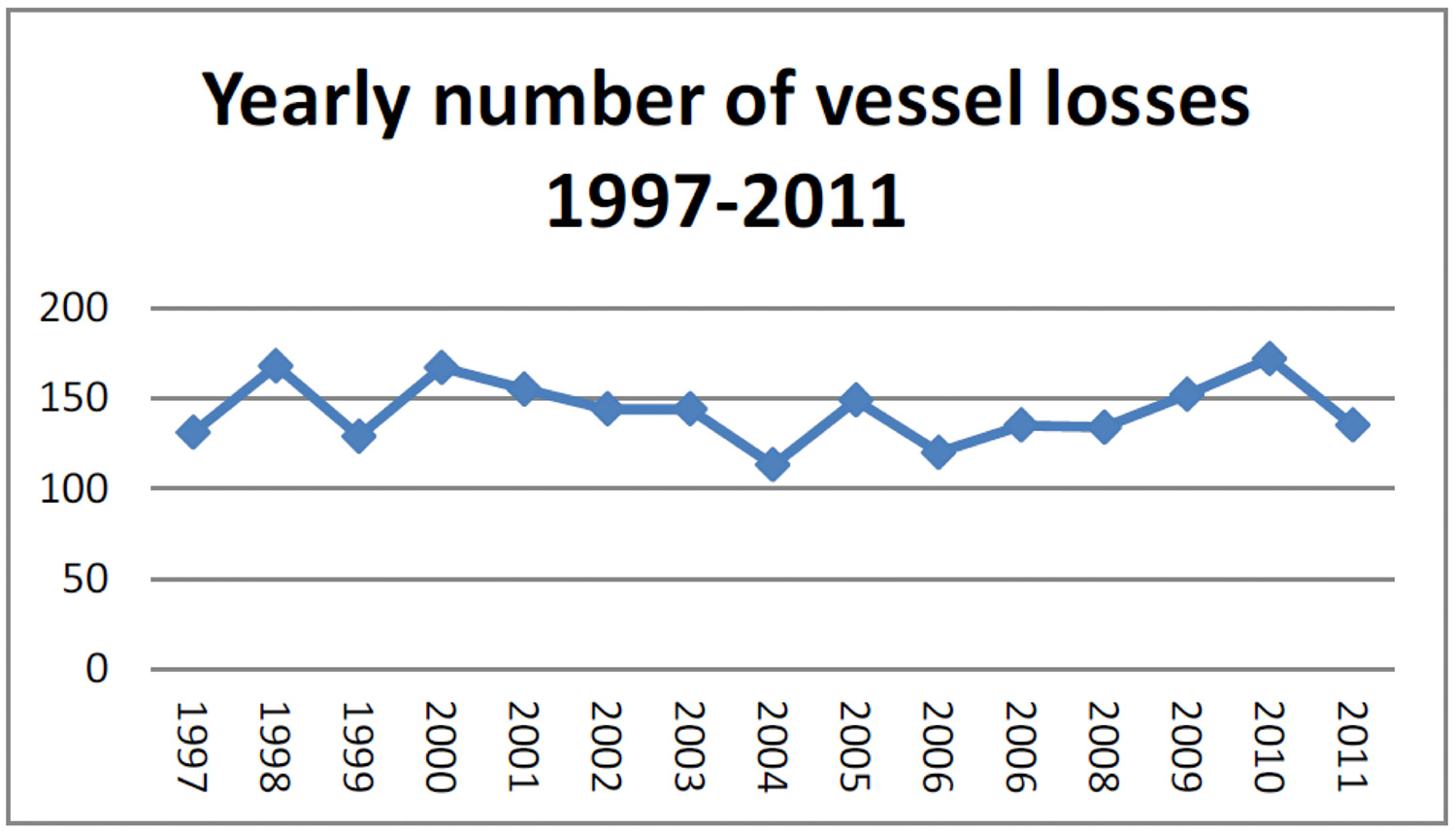Background
Leading principle during navigation of vessels is the avoidance of collision and groundings to protect life, goods, and the maritime living space. However, a virtually unchanged number of ships’ accident has been observed during the last decade. Statistical analyses show that more than 50% of ship collisions have navigational causes, whereby 65% of whom has been induced by human factor. Main reasons in this context are insufficient situation monitoring (28%), misleading evaluation of ships’ motion (17%) as well as fatigue and overstressing of nautical staff (13%). The risk on incorrect decisions and therewith the risk on accidents can be reduced by application of automated assistance functions supporting the seafarer in situation monitoring, evaluation, and decision finding. The ongoing need to reduce the accident risk by sufficient safety measures can be concluded from figure 1.

The International Maritime Organization (IMO) recognized at an early stage the increasing demands on safety and efficiency of maritime transport and initiated in the year 2006 the “e-navigation strategy” as international working program for the further enhancement of the maritime traffic system. In the first phase (2009-2014) an implementation plan was elaborated and consolidated to record user needs and to identify appropriate approaches. As result the following 5 key themes has been prioritized for implementation into the maritime traffic system:
(1) Improved, international standardized and user-friendly design of ship bridges;
(2) Methods for standardized and automated reporting;
(3) Improved reliability, resilience, and integrity of ship bridges and navigational information;
(4) Integrative presentation of available information on graphical displays;
(5) and improved communication of VTS services.
Especially for the key themes (1) and (3) the integrity evaluation of navigation-relevant data and their application-orientated preparation play an important role. Both are a necessary prerequisite to enable the implementation of safety-relevant assistance functions as well as standardized and automated reporting functions. In the year 2009 DLR has started first research and development activities within the project “Maritime Traffic Engineering” dealing with the assurance of data and system integrity in the maritime PNT- as well as TSA-system (PNT: position, navigation, and time; TSA: traffic situation assessment). The project A++Set has been conceived as follow-up project.
